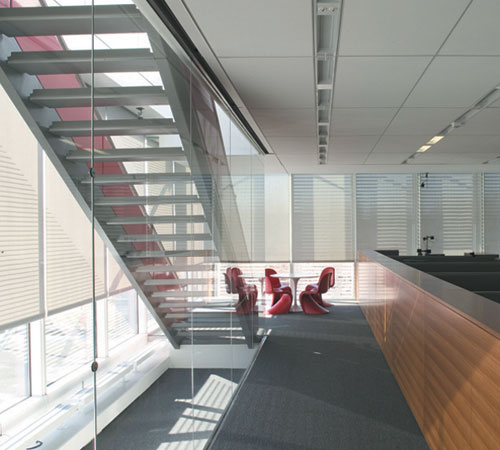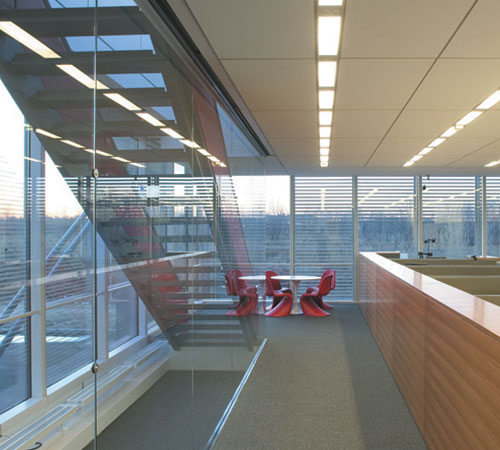Automated Shading and Light Systems
At 3:20 p.m., shades on the south elevation remain in the third position and the shades on the west elevation have lowered to the third position, as well. Interior lighting is now on to 10 percent.
 |
At 5:45 p.m., the sun is below the horizon. Both sets of shades have risen to the full-up position, providing building occupants with impressive cityscape views and the interior electric lights are on.
 |
Two Important Considerations When Specifying An Automated Shading and Lighting control System
As the movement for daylighting and daylight harvesting continues to gain momentum in the energy codes and green building programs, the number of projects that will require some type of automated shading and lighting control system will continue to grow. While not every project will have the scale or scope of The New York Times Building, there were some lessons learned about how certain products impacted the overall system that may be wise to share. There are two important features to consider when selecting a system. One will maximize a building's exposure to ambient, glare-free daylight. The other ensures that the lighting system is compatible with a larger product pool, providing designers more choice in fixture types, lighting controls, etc.









